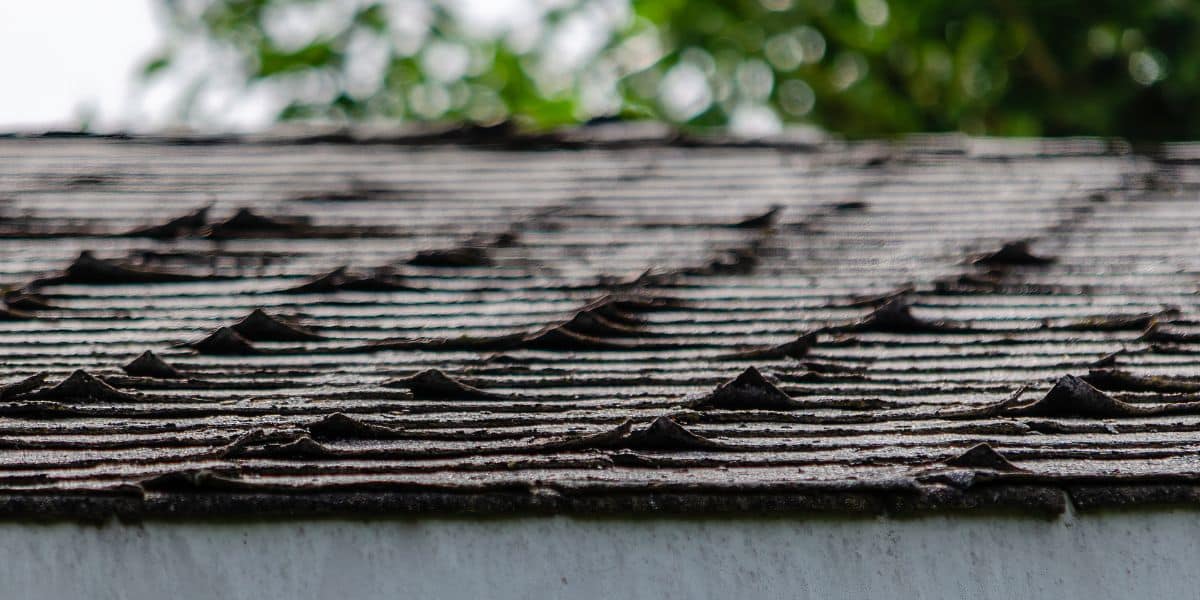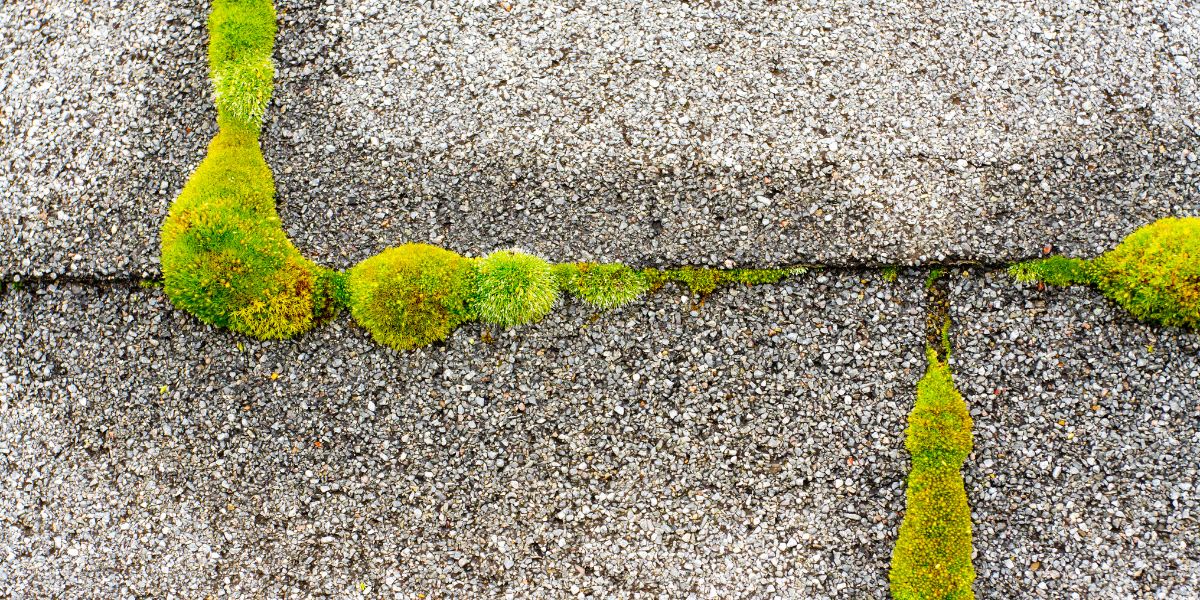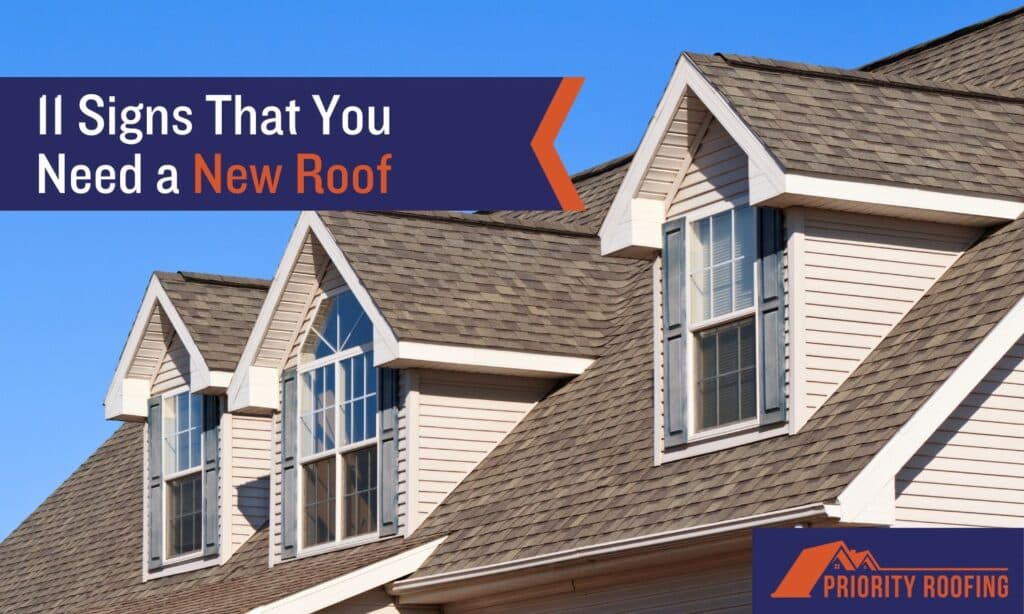Roofs are an important part of any home. When working properly, they protect your home from damage by water and the elements. Over time, however, your roof may begin to show signs of wear. You can take your roof for granted until there is a problem, such as water infiltration or rot.
To minimize the risk of injury and property damage, it’s best to look out for signs early on that a roof needs to be replaced. Maintaining your home is important to keeping it in good shape for future resale and protecting yourself. Do not ignore these warning signs.
Sign #1: You can see light coming through the attic
Head to the attic of your home. Are you able to see any light through the beams of your home? Some light is normal. For example, the gable vents, soffit vents, and ridge ventilators let in a little light while circulating air in your attic.
Look for small amounts of light and check for water stains. If you see larger water stains or significant light, it might be time to replace your roof. Call a professional residential roofing contractor for help.
Sign #2: Water damage upstairs and attic
A damaged roof could be indicated by moisture marks, brown or yellow stains on the walls and/or ceilings, and peeling paint. You can also check your attic for signs of roof damage. Damp rafters and leaks are common. You are your first line of defense when it comes time to spot roof damage.
However, you should be aware of the limitations. Once a year, call a roofer to perform a professional roof inspection. A basic inspection could save thousands of dollars on roofing repairs. Minor damage can be detected before it becomes a serious problem. A professional has the safety equipment and tools to climb up your roof and inspect for damage.

Sign #3: Your roof is near the end of its life
Your roof might need to be replaced if it is 25 years old. Asphalt shingle roofs can be repaired or even replaced before that. If you have installed a roof on top of an existing layer, it may be necessary to replace the roof after 20 years.
A licensed and insured roofer can tell you the age of your roofing system in a matter of minutes. Roof inspectors will examine the damage to your roof and work with your insurer to repair any damage covered by your policy.
Tips to help you determine the age of your roofing system before calling a professional:
- Ask the previous owner. You can ask the previous owner’s real estate agent for the contact details. The seller’s disclosure should include information about the roof’s age. This document contains information about the property’s condition that may negatively affect the value.
- Contact the roofer that worked on your house. You may be able to find the contractor who replaced your roof if you know it was done recently. Look around the house to see if you can find any records. You can also contact local roofing companies in your area. You can also contact local roofing companies. They may have records on the work they’ve done.
- Search for a roof building permit. In some states, a building permit is not required. If you can find out the date the permit was issued, you may be able to estimate the roof’s age. If you are working with them, you can ask a roofer to help you with this step.
- Examining the condition of the roof can help you estimate its age. Look for broken or chipped tiles on a slate or clay roof or curling shingles and loose granules on an asphalt roof.
When buying a house, it is important to ask about the roof’s age. You should also know signs that you need to replace your roof. You may be forced to replace your roof before you are financially prepared.
Sign #4: The roof is sagging
The roof may sag if moisture trapped under it has caused the boards to rot. Sagging, drooping roofs are a sign that you must replace them before your home is further damaged. Look for signs of moisture trapped, rotting roof deck, or sagging areas, especially at the lowest point in the roof.
Standing back and looking at your home from different angles is a good way to determine if it needs repair. Roofs should always appear straight and parallel to the lines of your home. This makes it easy to spot signs of sagging or slumping.

Sign #5: The shingles are curling
Look at the shingles on your roof. Are you noticing curling at the edges or in their middle? You may soon need a new roofing system if you see curling on the edges or in the middle.
The shingles curl either on the edges (cupping) or their middles (clawing). Warped shingles can cause leaks in your home, damaging walls, ceilings, support beams, floor joists, and beams. Keep an eye out for any damage as soon as you notice curling. Your roof will probably need replacing in a few short years. To be sure, call a professional roofing contractor.
Sign #6: Missing shingles
A missing shingle is never a sign of good health. It happens when the shingle weakens, and the adhesive that holds the bottom of the shingles in place begins to separate from the course beneath. The shingle will fall with just the right wind gust.
It’s not the end of the world if you have one or two missing shingles. In some cases, the problem could be caused by improper installation. The roof can be repaired quickly, even if the shingles are not exactly the same color.
Sign #7: Cracking shingles
You may see cracks on two or more shingles from the ground. But those aren’t cracks. These are tears caused by repeated thermal expansion and contracting cycles. The shingles expand as the sun heats up the roof. When temperatures drop, the shingles contract. These tiles will tear over time and cause structural damage and leaks.
Sign #8: Pieces of singles in the yard
Shingles do not always fall in large strips. It’s common to find small pieces of shingles on the ground when a roof is deteriorating. However, it’s difficult to tell where these pieces came from. If you notice small pieces in your yard after several windstorms, it’s time to get a closer inspection of the roof.
Sign #9: You have granules in your gutters
When you clean out the gutters of your home and notice granules in them, it could be time to replace your roof. This is especially true if your roof is over 10 years old. Granules, also known as crushed stone or other materials, are found on top of the shingles. These granules are designed to protect your roof against excessive sun damage.
Don’t be alarmed if you see loose granules on your new roof. This is normal for a brand new roof, and should improve with time. If your roof is more than a decade old, and you notice loose granules on it, then it’s best to have a professional inspect it. Your roof is probably due for a replacement.

Sign #10: You can see moss and algae
If you notice that your roof is green, it could be because moss and algae have found their way into the shingles. As long as your roof is not damaged by water, there is no immediate need to replace it. Moss, however, can cause damage to your roof as it keeps the surface moist for long periods of time, increasing the chance that water will get under the shingles.
New shingles are resistant against moss, algae and other contaminants. Be careful to not wash or scrape the moss from your roof by yourself. This could actually do more harm than good.
Sign #11: Your neighbors are getting new roofs
The sound of roofing nails in the neighborhood could be a warning for homeowners living in subdivisions and developments. The majority of developments only build a few homes at a time, which means that the houses in the same neighborhood are all relatively similar in age.
Since these houses are often built with the same materials, they should degrade at the same rate. If everyone is replacing their roofs, you might want to do the same.
You think you need a roof replacement? What’s next?
Don’t panic. Roof replacement is inevitable for most homeowners. This is part of routine home maintenance. Regardless of which type of roof you have, a new roof is a good investment for your home. A new roof can save you money over the long-term.
Most home insurance companies will give you a discount on your premium if you replace your roof. A new roof can also save you thousands in property damage caused by storms that result in water damage to your home.
Start getting quotes as soon as you decide that your house needs a roof replacement. You can save money by:
- Hire a professional roofer during the off-season.
- You may qualify for federal, state or local incentives if you choose energy-efficient roofing.
- Get multiple quotes from roofing professionals to find one that fits your budget and meets your needs.
- Learn as much as possible about the process of replacing your roof. You’ll gain valuable knowledge by doing your own research.
Remember that investing in the roof of your home is almost always wise. You may think it’s expensive, but you can save a lot of money and hassle in the long run.

